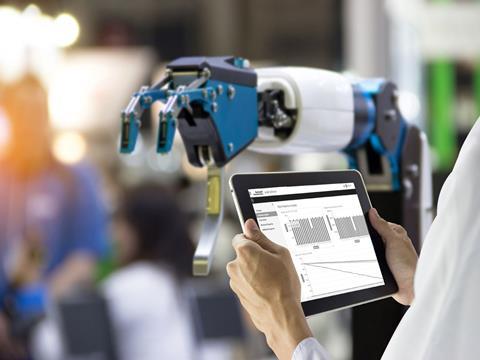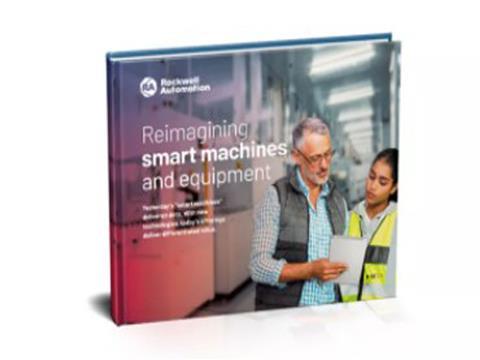
In the latest edition of our Innovation Spotlight, learn more about Rockwell Automation’s approach to the next big hurdle for machine builders: delivering smarter, highly flexible machines without compromising throughput.
For years, consumer goods machine builders have focused on improving the changeover time and flexibility of their equipment.
While the result has enabled an unprecedented increase in the number of SKUs produced, flexibility and throughput are not evenly matched across a typical plant floor.
In other words, a case packer loads pouches at 300 per minute, but the pouch filler cannot match that speed. An entire packaging line can change over in minutes. But the high-speed processing equipment that feeds it isn’t as agile.
Under normal circumstances, manufacturers can sacrifice throughput on some equipment – and maintain flexible production and adequate supply.
But when the pandemic struck, the surge in demand quickly tipped the scales in favor of maximizing plant throughput. And flexibility suffered.
Recent events have highlighted the next significant challenge for all of us that serve the industry: How do we build smarter, highly flexible machines – that don’t compromise on throughput?
Technologies that Remove Boundaries
Thanks to advances in mechatronics, the road to more flexible equipment is often the path to better throughput.
Particularly in packaging and assembly applications, two technologies are leading the way:
- Robotics. Intrinsically flexible, robots use vision-guided line tracking – not mechanical rerouting – to address infinitely variable product shapes and sizes. Robots can change their recipe on the fly – and still meet production rate demands.
- Independent cart technology (ICT). Conventional conveyance systems move products on a preconfigured path at a fixed speed. ICT boosts flexibility and throughput by intelligently moving carts based on where other carts are in the system.
More OEMs are using unified machine control strategies to integrate these technologies into their equipment – and plant architectures.
Open for Business
Machine builders must also reimagine what flexibility means in the e-commerce space.
Over the past decade, the virtual marketplace has grown exponentially. And the COVID pandemic ramped up demand by making the convenience of online retail a necessity.
In addition, more manufacturers are moving away from wholesale and retail distribution altogether – and increasing their profit margins by selling directly to consumers online.
What’s next? Tighter integration between the supply chain, e-commerce portals and MES systems to enable a faster, more flexible manufacturing response better aligned to demand.
And for OEMs, this means sharing the digital foundation of machines with customers early in the process. And designing equipment that’s not only easily integrated in the production space – but also connects directly to applications across the enterprise and beyond.
A Smarter Way to Work
Even the most agile machine cannot maximize throughput if it’s not performing optimally. And this year, we all learned to take a more flexible approach to solving equipment challenges.
For OEMs faced with travel restrictions, remote connectivity to installed assets was the only way to service machinery. On the bright side, OEMs I’ve talked with mentioned that even customers who were previously resistant to remote assistance were grateful for the technology.
The pandemic has also accelerated the adoption of other digital technologies that optimize machine performance – and support more flexible work paradigms.
In particular, augmented reality platforms have made a significant impact. For example, this collaborative remote assistance tool uses augmented reality to enable workers to share real-time instructions and guidance without being physically on site.
Strategy for Success
The latest advances in mechatronics and digital technologies could improve machine flexibility or throughput on machines by 50% or more. So as a machine builder, what steps can you take?
One piece of advice: This isn’t a retrofit project.
To achieve the dramatic gains new technologies promise, you will likely need a “clean slate” approach to machine design. And have a vision of where your digital journey will ultimately lead – aligned with customer needs.
In my experience, collaborative projects that take advantage of the natural “push and pull” between OEMs and their customers result in the most transformative, cost-effective machines.
Learn more about how to build smarter machines and equipment that improve flexibility without compromising throughput.

eBook: Reimagining Smart Machines and Equipment
As an OEM, how do you keep up with marketplace challenges? This eBook from Rockwell Automation explains that the answer is: with information-enabled, smart machines and equipment that use advanced technology — and are built on a foundation that securely and safely connects to the production environment and beyond.
This content was sponsored by Rockwell Automation.














